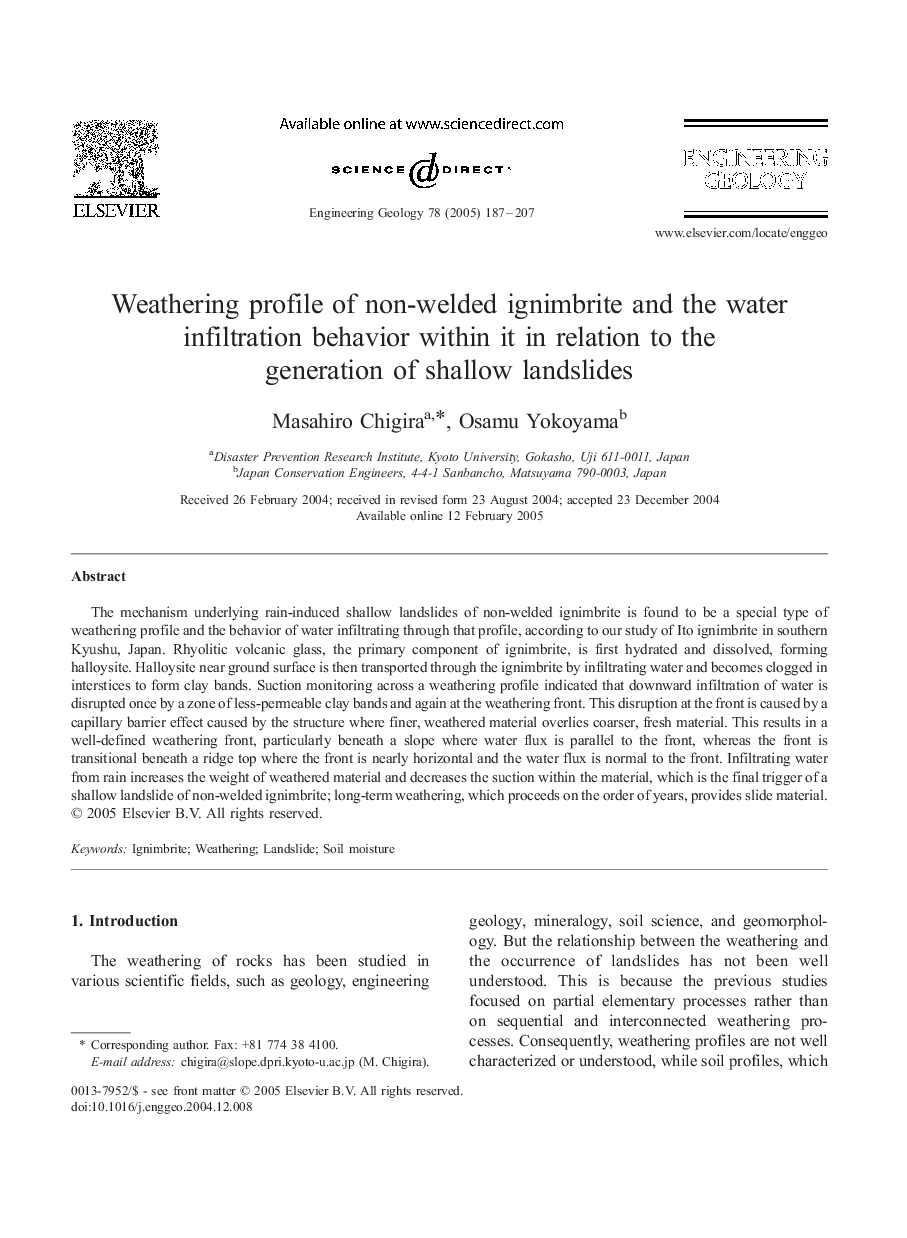| Article ID | Journal | Published Year | Pages | File Type |
|---|---|---|---|---|
| 9538036 | Engineering Geology | 2005 | 21 Pages |
Abstract
The mechanism underlying rain-induced shallow landslides of non-welded ignimbrite is found to be a special type of weathering profile and the behavior of water infiltrating through that profile, according to our study of Ito ignimbrite in southern Kyushu, Japan. Rhyolitic volcanic glass, the primary component of ignimbrite, is first hydrated and dissolved, forming halloysite. Halloysite near ground surface is then transported through the ignimbrite by infiltrating water and becomes clogged in interstices to form clay bands. Suction monitoring across a weathering profile indicated that downward infiltration of water is disrupted once by a zone of less-permeable clay bands and again at the weathering front. This disruption at the front is caused by a capillary barrier effect caused by the structure where finer, weathered material overlies coarser, fresh material. This results in a well-defined weathering front, particularly beneath a slope where water flux is parallel to the front, whereas the front is transitional beneath a ridge top where the front is nearly horizontal and the water flux is normal to the front. Infiltrating water from rain increases the weight of weathered material and decreases the suction within the material, which is the final trigger of a shallow landslide of non-welded ignimbrite; long-term weathering, which proceeds on the order of years, provides slide material.
Related Topics
Physical Sciences and Engineering
Earth and Planetary Sciences
Geotechnical Engineering and Engineering Geology
Authors
Masahiro Chigira, Osamu Yokoyama,
